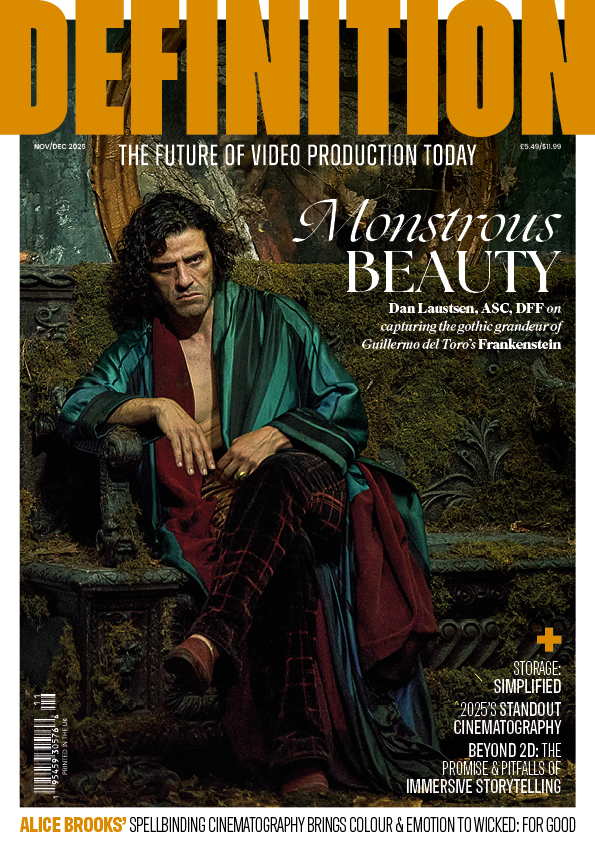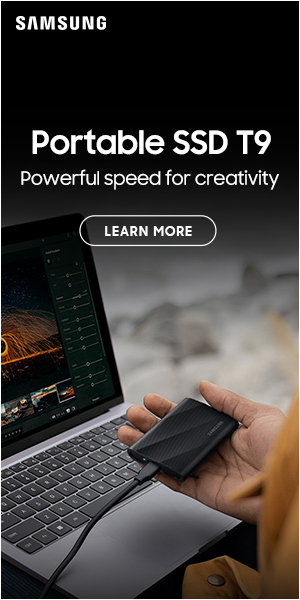
Interview – Ben Saffer
Posted on Feb 4, 2025 by Admin
Dog Days
Ben Saffer captures an intimate drama with the URSA Cine 12K LF and Cooke S8s
When shooting indie short Dog, DOP Ben Saffer wanted to give the drama a rich emotional landscape to parallel the natural landscapes of its Yorkshire locale. The story follows the relationship between three siblings aged eight, ten and 12 who live on a farm with their parents.
“Their parents aren’t absent; they’re just busy and tend to leave the kids to themselves,” Saffer explains. “We’re aware of the parents in the background, but our focus is on the kids and their attempts to connect with each other that don’t quite work out. It’s a lovely script. I’ve shot more than 50 short films and I’m always looking for different approaches to developing storytelling and characters.”
Caitlin McLeod is a multi-award-winning theatre director for the Globe, the RSC and the National Theatre, who previously directed the dramatic short One Like Him, which was produced by Jessica Palmarozza of Flumeri Films, like Dog. Saffer, who lensed the indie feature A Kind of Kidnapping and was DIT for Linus Sandgren ASC, FSF on No Time to Die, has photographed work for several theatre directors, and finds that his technical background complements their approach to filmmaking.
“There’s a synchronicity with theatre directors, who intuitively know what performance they want but might not necessarily know where they want to put the camera,” he says. “The challenge with Dog was giving the story more scope so we feel the landscape of the Dales.”
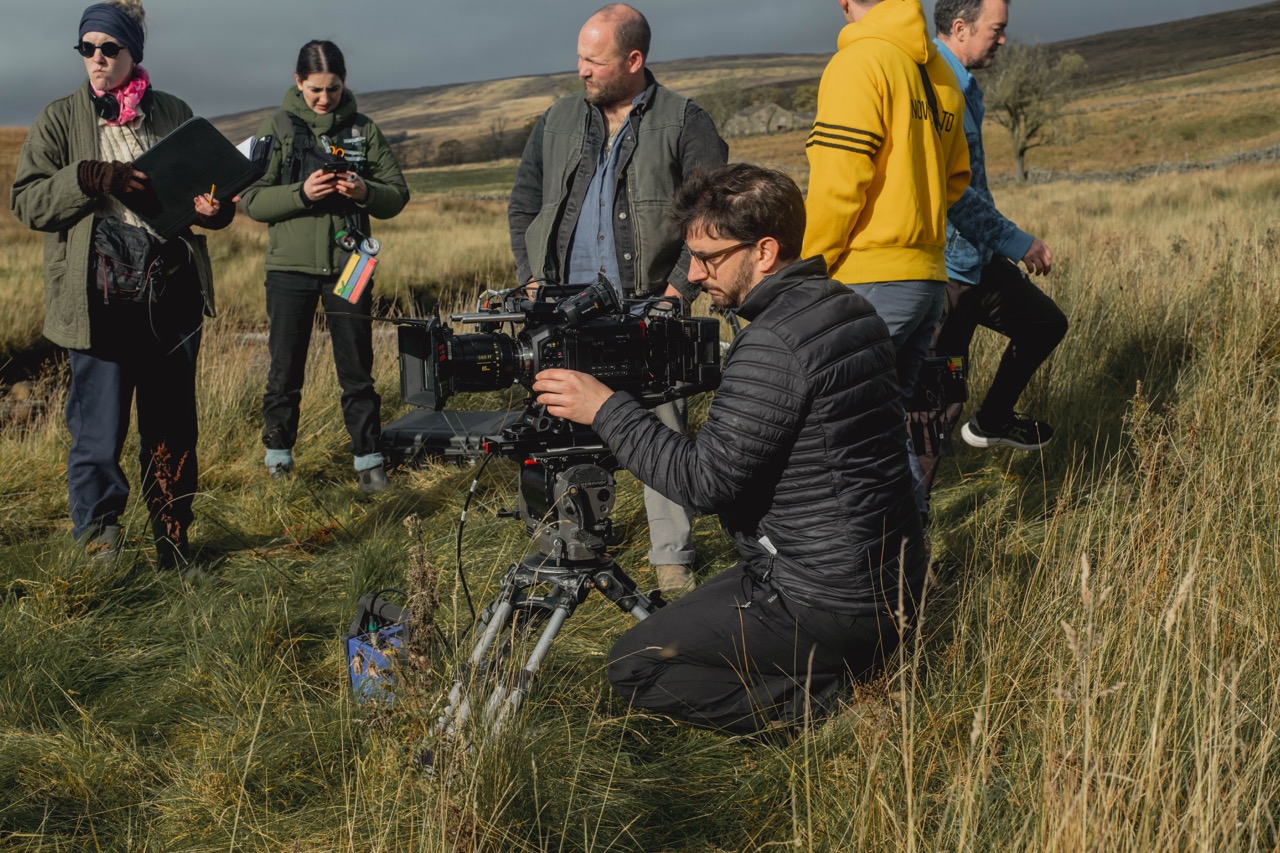
Made in Yorkshire
“Caitlin and Jessica were searching for somebody with local knowledge of Yorkshire, and, although I now live near London, I learnt about filmmaking and photography through wandering around the Dales while at university in Leeds,” says Saffer.
The main location for the three-day shoot was a farmhouse deep in the Yorkshire Dales, which the producer and director found via an extensive scout of Airbnb. It had the requisite quirkiness and isolation, doubling as accommodation for the cast and crew during production. “The logistical task was to do everything in a way that would make our cast of children feel less like they were on a film set and more like they were just playing,” Saffer explains. “We tried to keep the set minimal and work quickly to maximise the time we had with them on camera, potentially doing some fairly long takes.”
Reading the script, Saffer’s instinct chimed with McLeod’s, which was to shoot in 16mm. “It’s set in the nineties and so needed a slightly nostalgic aesthetic, but given the amount of time we had, we wanted to be running camera and not miss any moments with our child actors that led us down a digital path,” he says.
Saffer likens his approach to cinematography to evoking memories. “How I see things when I’m remembering is how I tend to filter my cinematography. Given Dog is set in the nineties, a period I remember well, my aesthetic approach was filtered through nostalgia for that.”
To help establish the idea of memory, McLeod suggested creating pools of light. “She wanted the characters to walk through shadow, be silhouetted and then come into the light. The idea was to make the environment feel functional rather than too friendly.”
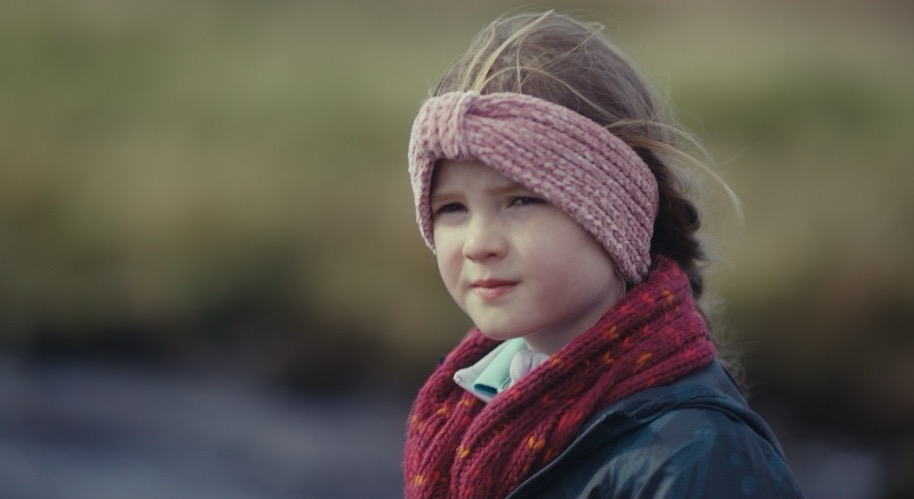
Pools of light
“The kids are playing in this kind of tent or den in the first and last scenes. The immediate thought was to shoot it like a John Lewis Christmas advert, with cosy, warm tungsten light. But that was the opposite of what Caitlin wanted.”
Production designer Liz Simpson devised a way of making the scene feel cold and distant using functional props from around the farm. Saffer did a similar job with the lighting, using sufficient light to navigate the space and just enough darkness to evoke a slight emotional disconnect with their surroundings.
Panalux supplied most fixtures, including a selection of LiteMats, Velvet Kosmos 400 LED, NANLUX Evoke 1200 and Dedo hard lights. “In another situation, I would probably use more panels, but we wanted quite a lot of control, especially for the central hallway in the house where a lot of the action takes place.
“Rather than lighting the hallway itself, we could throw light through the bedroom doors, which automatically created those pools of light, giving us interesting silhouettes to play with.”
For a kitchen scene where the children are having dinner, the initial temptation was to light the table and fix underlighting around the cupboards, but McLeod preferred having the image fall off into the darkness. “So when the mum comes in and puts food down for them, we feel – without seeing – her presence. It’s all focused on the kids in the centre.”
The light pools gave Saffer a structure around which the rest of the visuals could be built. This included choosing to shoot with the Blackmagic URSA Cine 12K LF, a somewhat counterintuitive choice given that their starting point was 16mm.
“It captures an enormous amount of resolution, which, in theory, is the opposite of what we were looking for aesthetically,” admits Saffer. “Our recipe was to start with a sharp centre and lots of resolution, and then to work backwards to soften the image and help the children’s faces come through.”
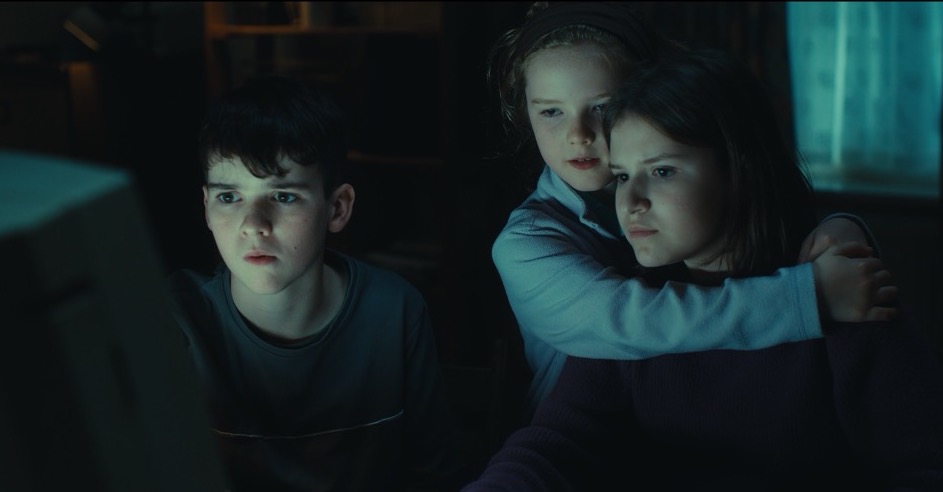
Colour science
A camera’s numerical resolution is far less relevant to the DOP than the perceived sharpness obtained from the sensor. “The colour processing pipeline is much more interesting and important to me. With Raw files and log profiles, the colour science dictates what the images look like rather than anything inherent in the camera itself.
“Assuming a camera has the latitude to produce a certain quality of negative, then I’m looking at the usability of the camera for the project, its ergonomics and how I can work with it on-set. Size, layout, accessories and whether my AC will kill me are all factored in when making that decision!
“That was my interest with the URSA Cine 12K LF. We tested it and quickly realised it was at least on par with other high-end cine cameras like the ARRI ALEXA and Sony VENICE. I also wanted to shoot in large format for this project to better capture the landscapes, which was key to the choice of camera.”
Another reason is Saffer’s familiarity with the Blackmagic workflow. “I came up as a dailies colourist and on-set DIT (on shows including The Peripheral and Bridgerton), so I’ve used DaVinci Resolve software almost every day of my career for a decade.
“I’ve also used Blackmagic cameras since the launch of its original cinema camera. And I tend to have a Pocket Cinema Camera 6K as a crash and B cam with whatever primary camera I use to shoot.”
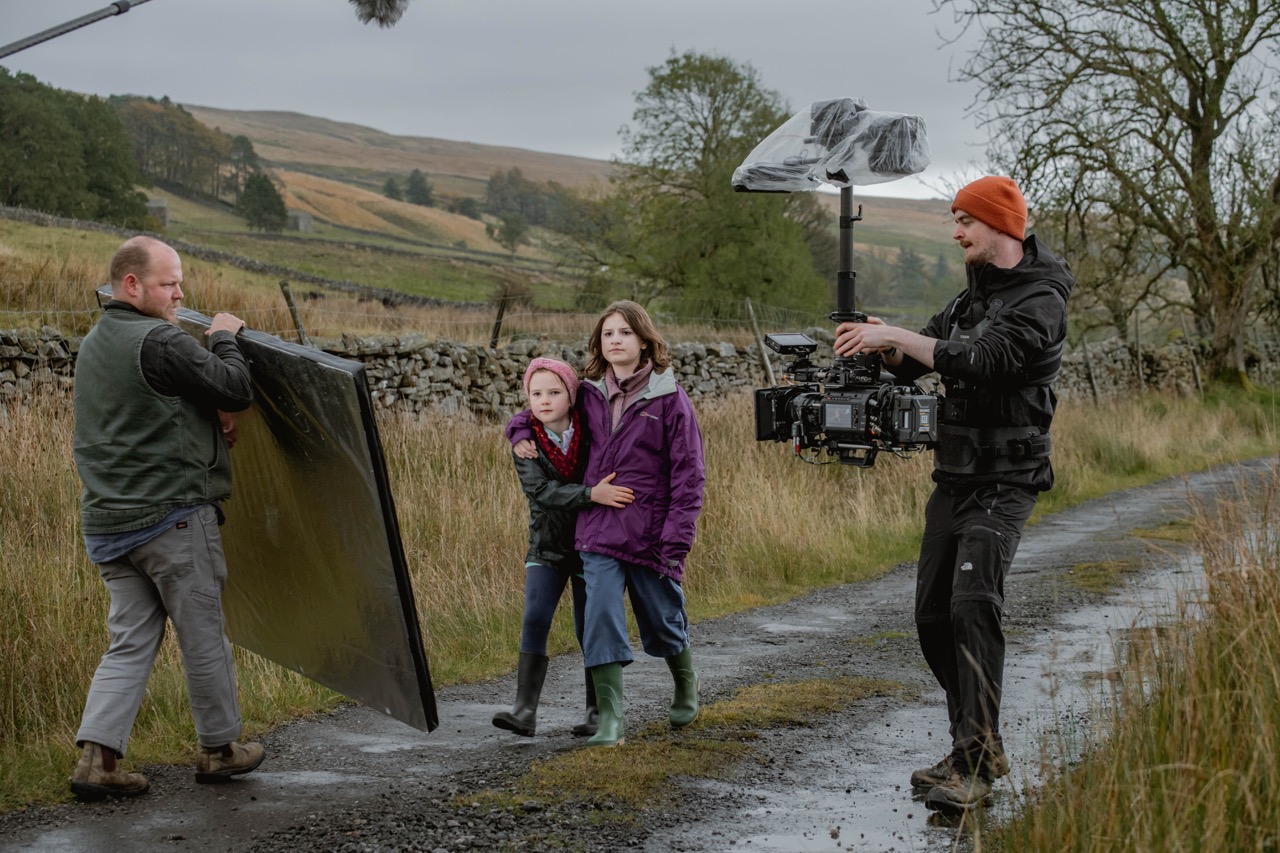
Intimate gentleness
For Dog, Saffer paired the camera with a set of Cooke S8/i primes, lenses he had shot with before, but had been itching to use on a narrative project.
“If I’d shot on 16mm with very sharp lenses I would have got a similar result to shooting on 12K, large format digital with forgiving lenses,” he says of the S8s. “These lenses are very forgiving. However, you still get that centre sharpness, which is something you often get with S16s. We spent a lot of time with the 40mm and 65mm focal lengths. The 65mm gave us a bit of distance and we used the 40mm when we wanted to be right up in the space with the three kids. We also shot close to wide open, which I don’t always do, but it gave us an intimate gentleness to counteract the high resolution.”
He shot in 8K using the full sensor readout at Q1 (quantisation) variable bit rate to reduce storage and prolong recording time. “Blackmagic Raw (BRAW) is one of the best codecs available. I know that we are going to be able to do everything we want to in the grade. Using this version of BRAW enabled the file sizes to be manageable on a short film budget while retaining everything we wanted visually. The data rate impacts the amount of money you need to spend on hard drives, so this route kept everything in check, with high-quality images.”
Saffer put a subtle LUT on the camera but didn’t tweak much beyond that. “The dailies looked great. The look I want to achieve is between a Kodak Vision2 and Vision3 because, for me, the nineties feels like the Vision2. It has brown hues and delivers rich skin tones, but with a little too much magenta, which the Vision3 offsets with its lovely teal tones in the blues.”
Saffer has used broadly the same LUT on his previous four narrative films because he prefers the simplicity of a film workflow. “I think it’s better to have a film stock that you’re shooting on, and then to create the look with the lighting, lenses and filtration rather than having to do heavy grading. If you’re changing the LUT all the time, it starts to feel like an Instagram filter – like it’s being imposed on the image rather than its foundation.”
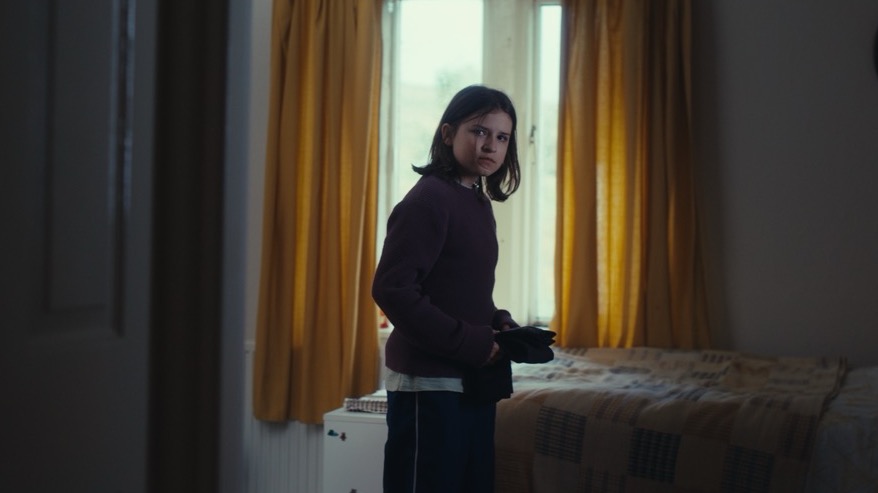
Handheld with EVF
Since Dog was almost all handheld, the camera’s usability was important. “When you’ve got kids on-set, you can’t be stepping away to go look at a 17in screen. I needed to stay there with the camera pretty much framed up all the time, so having an EVF I could trust was a big deal. I always want a solid way of monitoring the picture that I can light from, which generally means having a good viewfinder.
“Honestly, these are pretty hard to come by. It mystifies me that camera manufacturers find it so hard to make them good enough, but the Blackmagic EVF is fantastic. It comes out of the box pretty much dead-on calibrated. I have also got my 17in Sony OLED, which has been my trusted calibrated monitor for a long time, and the EVF was pretty much bang on to that.
“I also want to make sure my focus puller, Andrew Nowley, is happy in terms of having all the connectivity and power options we need. He did a great job of coming up with a rig for the camera that worked for Dog,” Saffer continues.
“Sometimes I would be operating right up against a wall and had to be on the right-hand side of the camera. Usually, I’d just flip an external on-board monitor across, but here we could use the AC’s monitor on the side of the URSA Cine 12K. It was very useful but meant we had no room for accessories on that side, so we ended up building onto the back of the camera instead.
“Handheld, the URSA had good balance but was quite weighty, which is what you want. I want the camera to feel grounded and present, not lightweight and jittery – it was a good experience.”
Dog is currently in post-production and is targeted for being shown at festival screenings in 2025
This feature was first published in the January 2025 issue of Definition




